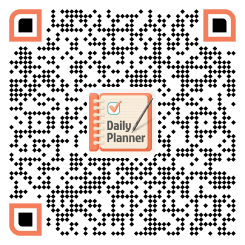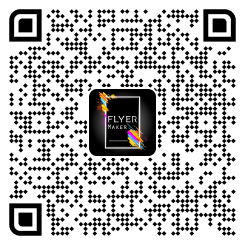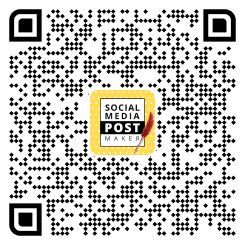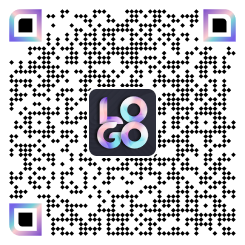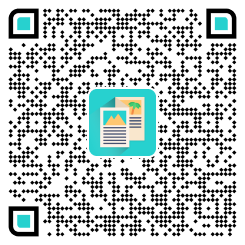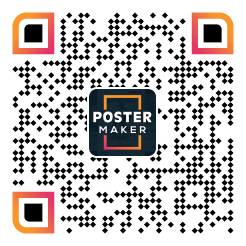In our fast-paced modern world, the perfect flyer format is the most important. Whether you’re promoting an event, advertising a product, or spreading important information, a well-designed flyer can make all the difference.
This blog explores the world of creating flyers and their format with PhotoADKing pre-designed templates, exploring how to ensure your message resonates and captures your audience’s attention. We’ll show you what information should be included in the flyer and its importance to leave a lasting impression, regardless of whether you are an experienced designer or a non-designer.
Perception is everything. So, Let’s get started.
Perfect Flyer Format
Header
- Firstly, choose a bold and attention-grabbing font for the main title or headline.
- Make the headline concise and clear, conveying the main purpose of the flyer.
- Thus, consider using a larger font size for the headline to make it stand out.
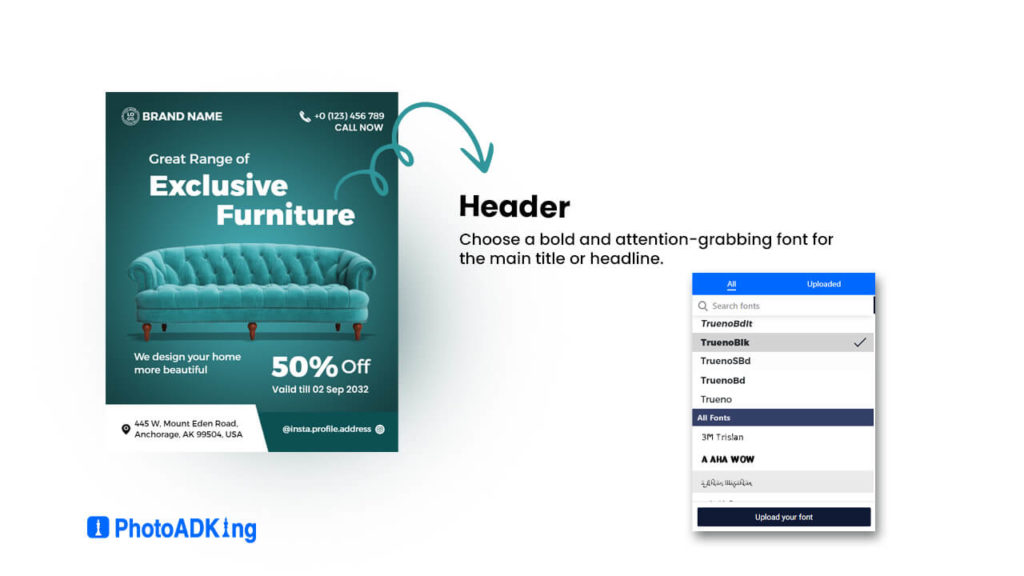
Read more about the Typography of Flyers
Body Text
- Use a legible font for the body text that is easy to read.
- Write concise and compelling text that provides more details about the event, product, or message.
- Break up the text into paragraphs or bullet points to improve readability.
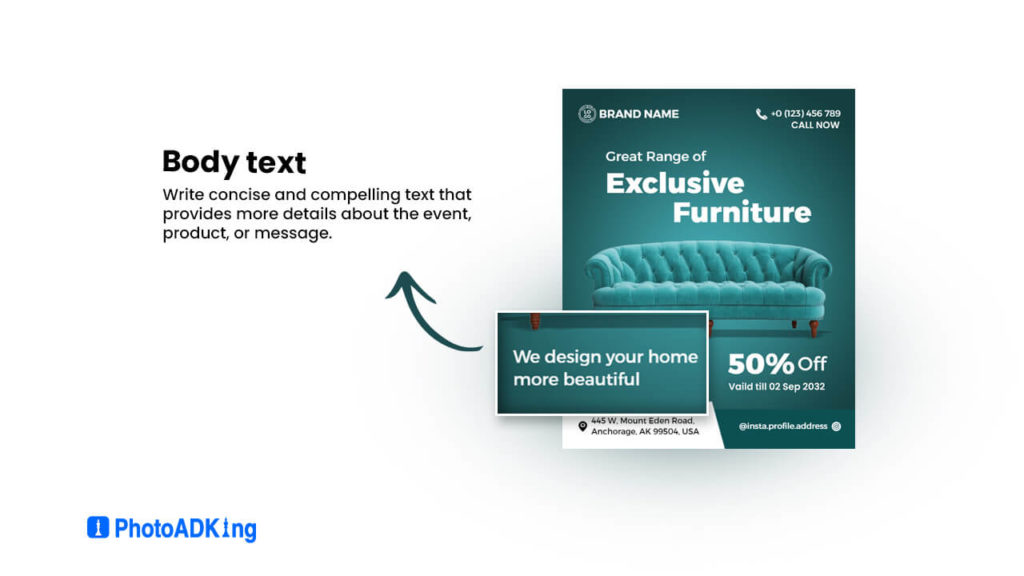
Images/Graphics
- Include relevant images or graphics that support the message of the flyer.
- Use high-resolution images to ensure they appear clear when printed.
- Place images near related text to create visual connections.
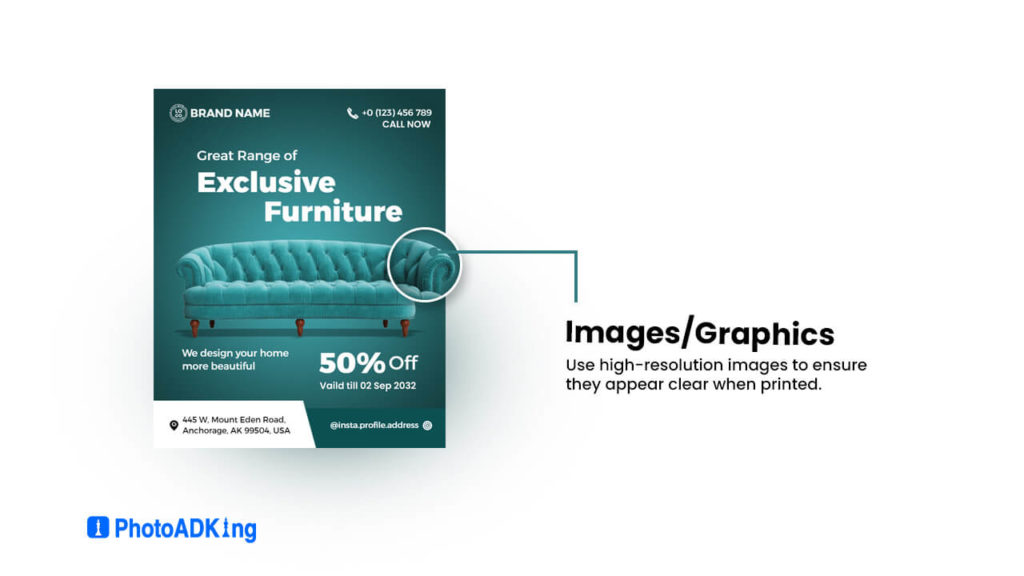
Read more about How to Choose a Color Palette for Flyer
Contact Information:
- Include contact details such as phone numbers, email addresses, website URLs, and social media handles.
- Place contact information prominently, usually at the bottom of the flyer.
- Use clear and legible fonts for the contact details.
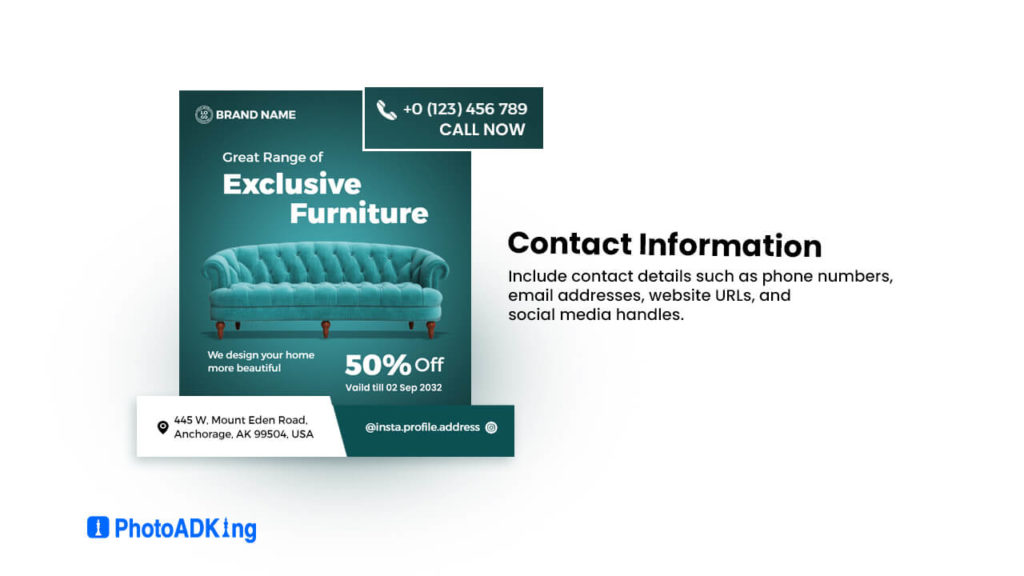
Branding:
- Meanwhile include your organization’s logo in a prominent location on the flyer.
- Additionally, use colors that align with your brand’s color palette.
- Maintain consistency with fonts used in your branding.
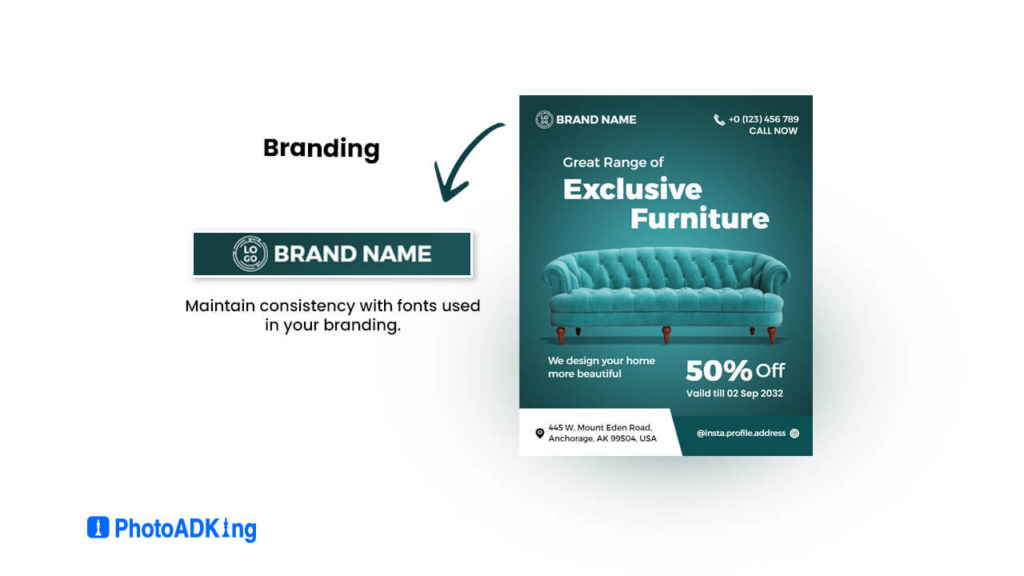
Size and Orientation:
- Choose a standard flyer size, such as letter (8.5″ x 11″) or A5 (5.8″ x 8.3″).
- Decide whether the flyer will be in portrait or landscape orientation based on content and design preferences.
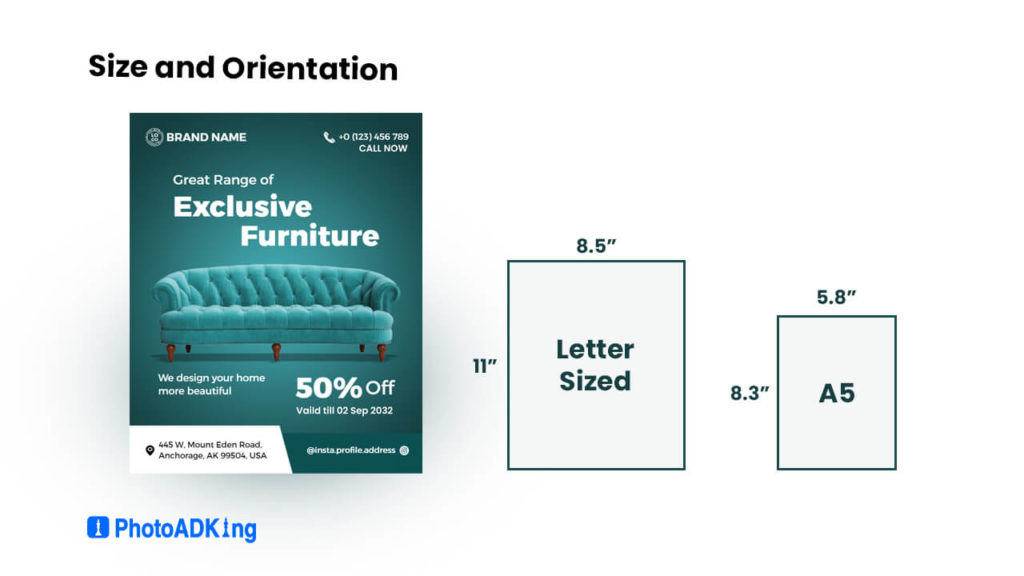
Read more about the Flyer Size Guide
Distribution Information:
- Consider the distribution method such as handing out in person, mailing, or posting online.
- If distributing digitally, save the flyer in a web-friendly format like PNG, PDF, or JPG.
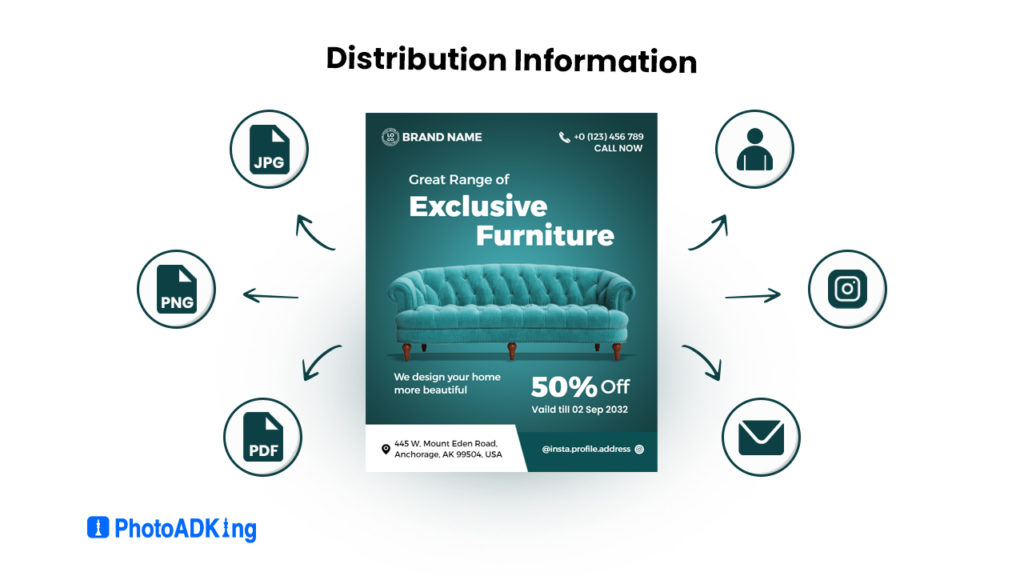
Date and Time:
- For event-related flyers, clearly mention the date, time, and location of the event.
- Use a font that stands out for these important details.
- Consider using contrasting colors to highlight the event information.
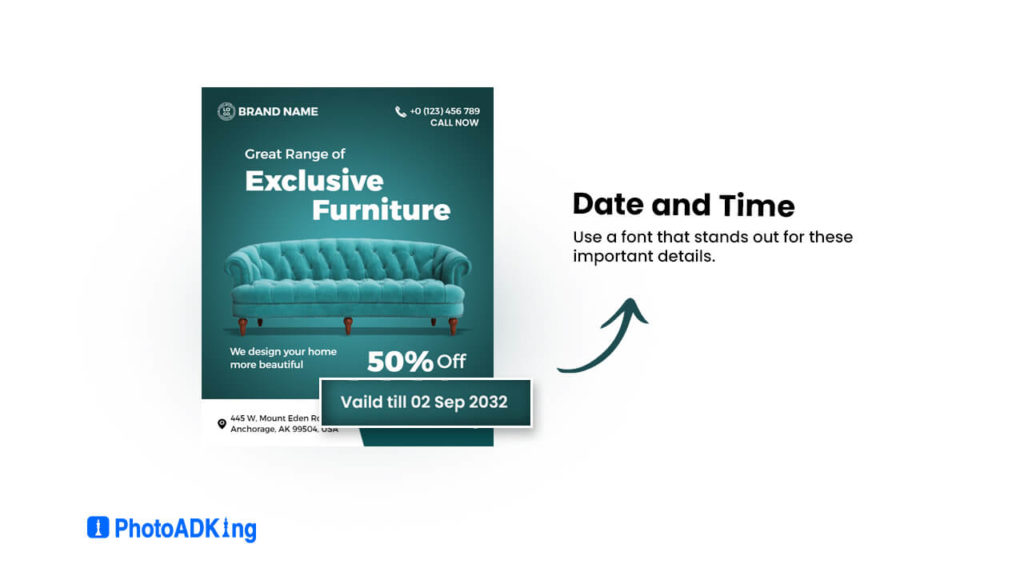
Call to Action:
- Encourage the reader to take a specific action, such as attending an event, visiting a website, or making a purchase.
- Use action-oriented language, such as “Register Now,” “Learn More,” or “Get Your Tickets.”
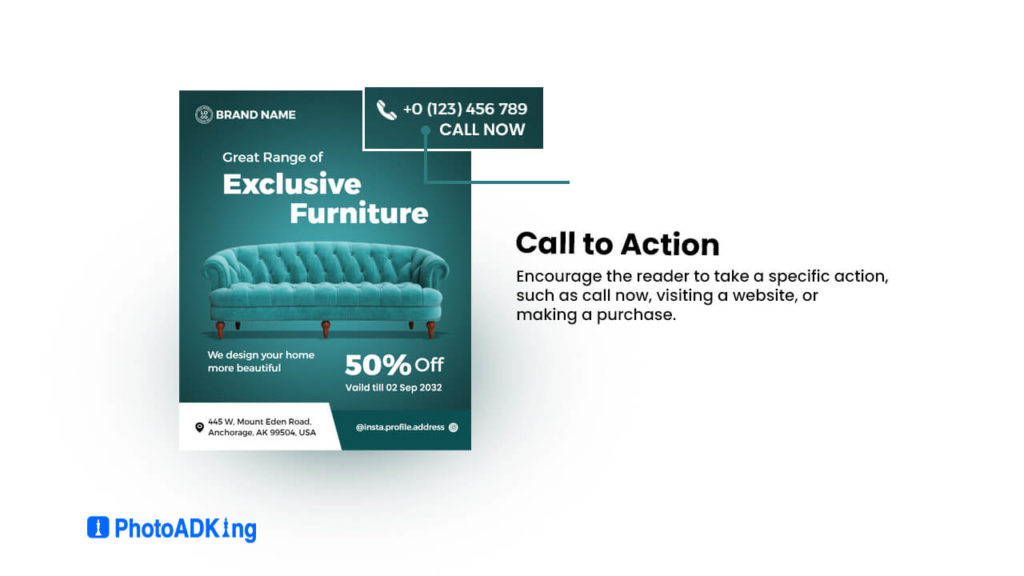
Importance of an Effective Flyer Format
Unlock the significance of a potent flyer format using PhotoADKing’s flyer template. Moreover, this flyer format illuminates the vital role of a well-structured flyer in modern communication.
Attention-grabbing:
A well-designed flyer instantly captures the viewer’s attention, increasing the likelihood of them engaging with the content.
Clear Message:
An effective flyer allows you to convey your message clearly and succinctly, thus ensuring that readers understand the purpose of the flyer at a glance.
Read more about Flyer Purpose
Visual Appeal:
Thoughtfully designed with visuals, color schemes, and layout choices enhances the overall visual appeal, making the content more engaging.
Professionalism:
Using an organized reflects professionalism and credibility, also boosting trust and interest in the content.
Guided Reading:
A structure guides the reader’s eye simultaneously through the content logically, preventing confusion and improving comprehension.
Brand Recognition:
Eventually, consistent branding elements reinforce brand identity and help establish a recognizable image in the audience’s mind.
Call to Action (CTA):
A well-placed CTA prompts readers to take desired actions, whether it’s attending an event, making a purchase, or visiting a website.
Easy Information Access:
An effective presents information in digestible sections, thus making it easy for readers to locate specific details without feeling overwhelmed.
Versatile Distribution:
A standardized is suitable for various distribution methods, such as printing, emailing, or sharing on social media.
Time Efficiency:
A well-structured ensures that the essential information is communicated efficiently, saving both the creator’s and the reader’s time.
So, let’s explore some blogs to spark your creativity. Additionally, we’ve seen some great flyer formats that caught your eye.
To Conclude
In conclusion, crafting an expertly designed flyer utilizing a flyer maker requires meticulous attention to diverse elements. These range from the header and body text to images, contact information, and branding. By following a structured format and paying attention to design principles, you can create a flyer that effectively captures your audience’s attention and communicates your message.
Remember to maintain consistency in branding, moreover, use appropriate fonts and colors, and ensure that your flyer is easy to read and visually appealing.
Frequently Asked Questions
To make the body text effective, keep it concise and compelling. Additionally, use bullet points, headings, and paragraphs to break up the text and improve readability. Focus on providing key details while maintaining a consistent tone.
Images and graphics enhance the visual appeal of a flyer, bolstering the message you’re conveying. Moreover, pertinent visuals contribute to greater audience engagement and a more memorable experience.
An effective CTA should be clear and action-oriented. Use strong verbs and specific language to prompt the reader to take a desired action, such as attending an event, visiting a website, or making a purchase.
Branding ensures consistency with your organization’s identity. In addition, incorporate your logo, use brand colors, and maintain font choices consistent with your overall branding to create a recognizable and professional look.
Among the standard flyer sizes are (8.5″ x 11″) and A5 (5.8″ x 8.3″). Furthermore, depending on your content and design preferences, you can opt for a portrait (vertical) or landscape (horizontal) orientation.





